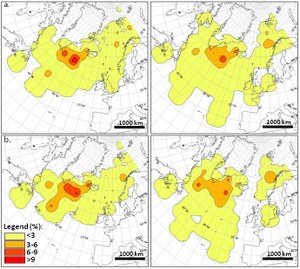Popular Science: North Atlantic Oscillation: What is its influence on weather?
As we know from his recent article, the NAO is an important mechanism influencing climate in the North Atlantic Ocean and also in Europe. It is a transfer of atmospheric mass in a zonal direction caused by differences between the pressures of atmospheric centres – the Azores high and Icelandic low. Changes in intensity affect what happens in Europe, but also in Asia, North America and Greenland. Changes in rainfall or temperatures are connected with the NAO as well.
Data from many stations in Europe was analysed. The data was from the second half of the 20th century and the results confirmed the relationship between changes in NAO intensity and rainfall and temperatures in Europe as well. The NAO’s influence on rainfall was carried out in the winter and also in the summer.

NAO intensity has a positive influence on maximum daily temperatures because the night-time temperatures do not respond to pressure centre activity to such an extent. The night-time temperatures are more affected by local factors. Temperatures and the NAO have the greatest correlation around 50°N. Rainfall also has a positive correlation but, on the contrary, it is weakest at 50°N and increases when we go further to the north or south.
The authors primarily pointed out the importance of the definition of the NAO. Pressure centres move, but meteorological stations do not, thus indices are just using pressure differences among stations in places of the atmospheric centres. Before we start the analysis it is necessary to know which data we have. Otherwise, the article confirms that the NAO has affected temperatures and rainfall in Europe.
Tomáš JANÍK
Document Actions